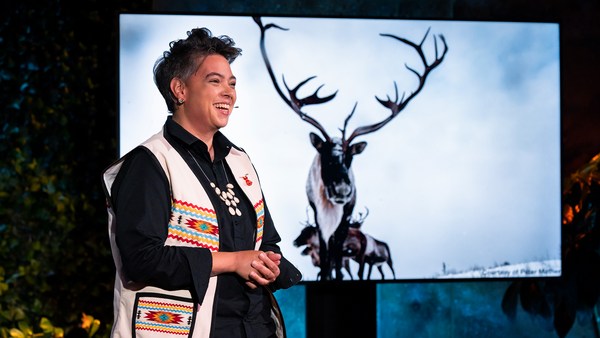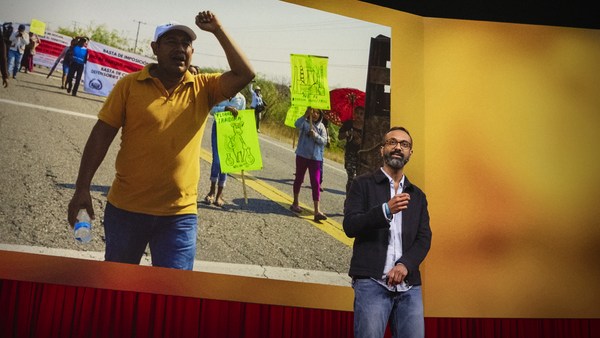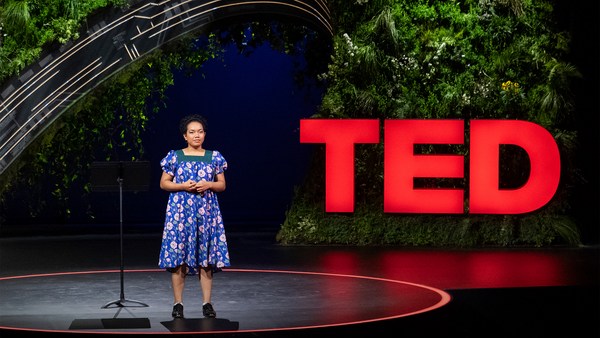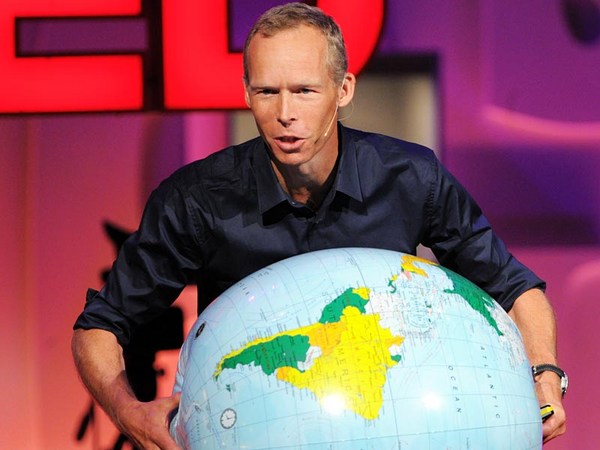A trusted elder once told me, pay your attention to your intention or other people's intentions. They may come in shiny packages, and they can be reinventions of the “same old.” The same old is the centuries-old paradigm of take and extract. They do come in shiny packages, but the core of them stays the same. Extractive.
So when we are paying attention to the intention, we ask ourselves a question: Is it to take, or is it to give? Is it to extract, or is it to regenerate?
I come from the Abzai clan of the Ekhirit nation of the Buryat peoples. We're Indigenous peoples in Siberia, on both sides of Lake Baikal, which is the largest freshwater lake in the world. In many Indigenous cultures, including mine, we are taught from very early childhood: take only what you need. Leave something behind so it can regenerate itself. And think seven generations ahead. That's what I learned from my grandmother.
Today, leading a global coalition to secure Indigenous peoples' rights in the green economy, I'm led by these values. They are core tenets of harmonious and truly sustainable living. So the idea of paying attention to the intention became all too real for me in May 2020. In Taymyr Peninsula, in the Russian Arctic, a large fuel tank owned by the subsidiary of Nornickel, the largest producer of nickel, ruptured. It spilled 21,000 tons of diesel into the local waterways. It has become the worst environmental disaster in the history of the Arctic. It also decimated the fishing and hunting grounds of many Indigenous communities who call that place home.
So a few months later, we heard the news that Elon Musk and Tesla are looking for new supply chains for nickel. And that was an opening for us to urge Tesla not to purchase nickel from Nornickel. Through a global campaign, we were able to establish a direct dialogue with the company, and we quickly learned that they're not involved and do not plan to be involved in this new supply chain. But through our efforts, Tesla now has an Indigenous peoples policy that requires all of their suppliers to respect Indigenous peoples' rights. We're continuing to work with Tesla to make sure that their new, shiny Indigenous people's rights policy is implemented throughout their supply chains.
One lesson that came out of this experience is that we learned that end-user companies like Tesla are more susceptible to Indigenous people's rights risk, to the reputational risk, and that, in turn, can manifest in substantial financial losses.
But this one supply chain is just the tip of the iceberg. Nickel, along with other minerals -- copper, cobalt, lithium -- are in increasing demand and are categorized as transition minerals. They are used in a variety of technologies, including electric vehicles, batteries. They're touted as the ultimate climate change solution and are a huge part of this green energy transition.
We quickly learned the scope of the problem. The newly released study by the University of Queensland states 54 percent of all transition minerals are located either on or near Indigenous people's lands and territories. And this fact poses an existential threat to 467 million people, Indigenous peoples, who are the best stewards of their ecosystems and environments, but whose lives and livelihoods are completely dependent on their territories and lands.
So since May 2020, we encountered multiple stories of many communities currently impacted by mining for transition minerals. Russia, US, Argentina, Bolivia, Chile, Indonesia, Democratic Republic of Congo and the list just goes on.
For example, in January 2023, there was news that the largest deposit of rare earth minerals was found in Kiruna village on Sami territories in Sweden. The Sami communities are already feeling the impacts of the existing iron ore mine on their reindeer herding grounds. But the proposition of new mines for the green technologies are going to completely wipe them out.
On the other side of the planet, the lithium triangle, Argentina, Bolivia, Chile, especially in the Atacama Desert, perhaps the driest place on Earth, Colla Indigenous communities are competing for supplies of clean drinking water with the lithium mining industry, which is extremely water-intensive.
So knowing what we know today, my question is: Are we going to center justice and achieve justice for all, or are we going to replicate the same mistakes of the past? And I think we don't have to replicate the same mistakes. Indigenous peoples have long moved the landscape from victimhood to becoming the protagonists, the decision makers, the actors of our own lives, of our own self-determined development. At the heart of this is our fundamental right to self-determination, which is expressed through the right to free, prior and informed consent. At the heart of it is that right to free, prior and informed consent.
There are four principles of this right. And those principles bring this right to life. They're all in the name. Free, meaning without coercion and manipulation. Prior, meaning before any decision about the development on Indigenous peoples' lands and territories. Informed means full disclosure. Investor reports, briefings, results of environmental, social and cultural impact assessment reviews. And when it comes to consent, it means that Indigenous peoples have the right to say yes or no, or maybe or yes with conditions. And it's not just a legal requirement. It's a way for all stakeholders to engage in a meaningful way. Policymakers, corporations, civil society, Indigenous peoples. It's not about jumping to a yes, but it's not about being anti-development. The process is as important as the end result. It's about treating people as equals. It's about approaching Indigenous peoples' traditional governance systems and approaching them on equal footing.
So we've worked with companies like Tesla and Ford to establish and adopt their Indigenous peoples policies that respect that right, important right to free, prior and informed consent. But what it looks like in practice, when a company like Ford, for example, works with a battery supplier and that battery supplier has to buy cobalt from a mining company, a mining company has to document and show that it has complied with all the standards, but also has meaningfully engaged with the community from whose lands and territories that cobalt is coming from. And we want to do that with every automaker around the world. But our ultimate goal is to fundamentally change the way governments and corporations engage with Indigenous peoples.
But technological fixes, like electric vehicles, are not a silver bullet. In fact, there are no silver-bullet solutions. They could be part of the solution, but they're not the solution. In fact, I think we have to question whether extraction is even needed, whether reuse and recycling could play a powerful role. I do believe that we need a stack of many, many, many solutions, and even Indigenous peoples don't offer every solution, but they offer the ones that center justice, equity, Indigenous people's rights and wellbeing. I think most important solutions, however, come from communities, people who live on the land. They know best. They are equipped with millennia-old traditional knowledge that they have inherited from their ancestors from the times immemorial. That's what they've been doing. That’s what they’re good at. And that’s what they’re offering as an alternative solution to the extractive mindset of take, take and take. Be part of the ecosystem. Be a good neighbor. Be a good relative to each other and other-than-human kin.
I think that with all of the solutions in place, we can make a difference. From communities in Nigeria, Colombia and Mexico, planting and restoring mangrove forests to communities in Ecuador, managing agroecological farms to communities in Alaska experimenting with kelp production, all supporting Indigenous livelihoods but also massively absorbing CO2.
Again, with all of the solutions in place, we can have that cumulative impact that will determine the future of our species and the climate. But we have to be very careful with one-sided approaches. For example, solely and exclusively focusing on CO2 emissions or as we call it, the carbon tunnel approach. We have to look at the solutions in a holistic way and in a way that does not sacrifice Indigenous peoples.
So when I go back to my conversation with the trusted elder, the question keeps coming up in my head: What is the intention? Are we creating new shiny things to give, to share, to love and be of service to others? Or are we creating them to take, extract and be of service to ourselves? With the right intention, I think with the right intention rooted in reciprocity and care, I think we have a chance. But it's the mindset that will determine whether we survive or find ourselves on the brink of extinction.
Thank you.
(Applause)



